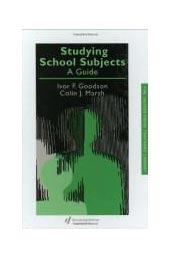Studying School Subjects: a guide
Conclusions, Complexities and Conjectures
In summarising the research reported in this book it is perhaps appropriate to begin by re-examining our original hypotheses. Firstly, the book provides support for the initial hypothesis that subjects, far from being monolithic entities, are comprised of shifting sets of sub-groups, 'delicately held together under a common name at particular periods in history'.
Obviously this pattern would appear most strongly in subjects representing 'fields' rather than 'forms' of knowledge. The history of geography, for instance, shows that in the early stages the subject was made up of a variety of idiosyncratic local versions devised or taught by specialists from other disciplines. During the period in curriculum history that is the concern of this book, the battle over environmental education
in the late sixties and early seventies, the sub-groups within geography can be seen 'pursuing different objectives in different manners'. So much so that in 1970 Professor Fisher wrote that 'The light-hearted prophecy I made in 1959 that we might soon expect to see the full 57 varieties of geography has been almost literally fulfilled, and my personal collection of different categories of geography that have seriously been put forward in professional literature now stands at well over half that number.' At about the same time, the President of the Geographical Association was warning that new geography created a problem because 'it leads towards subject fragmentation', so that ultimately 'the question must arise as to how much longer the subject can effectively be held together.' The potential danger of new versions of geography was touched on by Walford who argued that 'unity within the subject' was 'a basic requirement for the continued existence of the subject'.
The tendency to fragmentation in geography through the proliferation of sub-groups and sub-versions is a recurrent feature of the subject's history (see Chapters 5 and 10), and was echoed by the Norwood Report's fear about the 'expansiveness of geography'. At this earlier stage, 1943, they saw geography as 'The study of man and his environment from selected points of view' - a definition at that time leading to fears that through its expansiveness geography was becoming 'a "world citizenship" subject, with the citizens detached from their physical environment'. As a result at this time 'geography had become grievously out of balance; the geographical synthesis had been abandoned'. The problem was rapidly addressed and a decade later Garnett claimed that most school departments were headed by specialists so that 'The initial marked differences and contrasts in subject personality had been blurred or obliterated.
